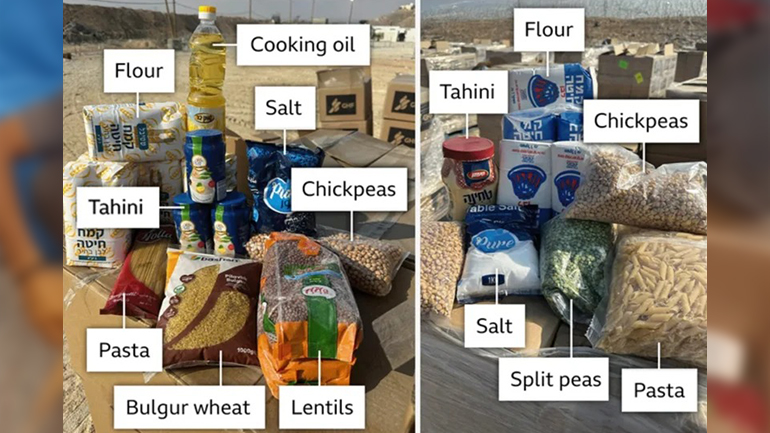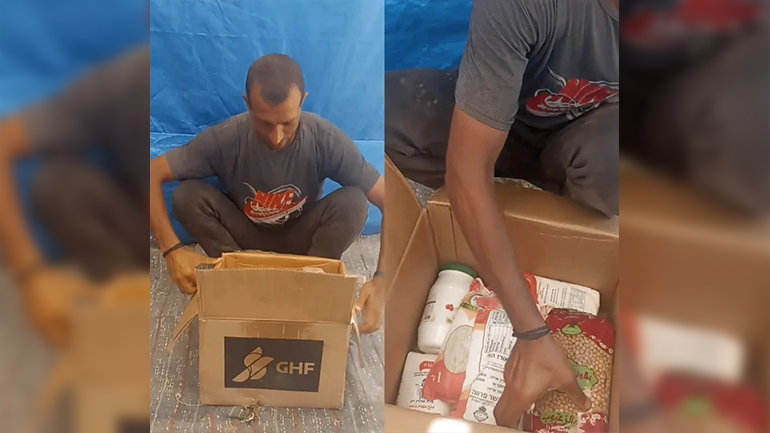

According to Gaza’s Ministry of Health, 14 people have died in the past 24 hours due to food shortages, including two children. The ministry reports that the total number of deaths caused by famine and malnutrition in Gaza has now reached 147, with 88 children among the victims. A report by the United Nations highlights that over 2 million Palestinians in Gaza are currently facing hunger, and the number of deaths due to severe food insecurity continues to rise. The Gaza Humanitarian Foundation (GHF), an aid group backed by Israel and the United States, began operations in Gaza at the end of May. The organization claims to have distributed over 9 million food relief packages. However, due to Israel’s ban on international journalists entering Gaza, it has been unable to verify GHF’s claims regarding aid distribution independently. A close review and discussions with humanitarian experts have raised serious concerns about the nutritional value of the food provided in these aid boxes.
Online videos on social media show Palestinians sharing the contents of the Gaza food aid boxes. At the same time, the Gaza Humanitarian Foundation (GHF) released images of the same packages earlier this week. Two photos posted on X (formerly Twitter) reveal that the food items largely consist of pasta, white chickpeas, lentils, and wheat flour. Preparing these dry rations requires both fuel and clean water, which are in critically short supply in Gaza. The aid packages also include cooking oil, salt, tahini, and sesame paste. GHF claims that some of the items are ready-to-eat foods, such as the popular snack halawa bars, made by mixing sesame (tahini) and sugar. The organization provided the nutritional value and caloric content of each item included in the food boxes. According to the chart, each standard box contains a total of 42,500 calories, and it is claimed that one box can feed at least five people for three and a half days. GHF added that the aid boxes occasionally include tea, biscuits, and chocolates, and sometimes onions and potatoes, although these additional items are not mentioned in the official item chart.

A professor of international development at the London School of Economics analyzed the list provided by the Gaza Humanitarian Foundation (GHF). He stated that while the food items may offer the calories needed for survival, there are “serious deficiencies” in their nutritional value. Professor Stuart Gordon explained: “These rations fill the stomach but are, in reality, nutritionally empty. The biggest problem is what they don’t include. This is essentially a ‘first aid’ food basket meant to stave off the immediate effects of acute hunger.” He warned that if this kind of emergency food parcel is distributed for several weeks, it could lead to "hidden hunger," which increases the risk of diseases such as anemia and scurvy. Dr. Andrew Seal, an Associate Professor of International Nutrition at University College London, added that these food boxes are severely lacking in calcium, iron, zinc, and essential vitamins like C, D, B12, and K. He emphasized that the aid packages also lack age-appropriate food for small children, posing serious health risks. “If such food is consumed regularly, it could lead to multiple forms of nutritional deficiencies and severe health problems, even if distributed in sufficient quantities,” he said. Dr. Seal also noted that, unlike GHF, major agencies like the United Nations World Food Programme usually distribute food in large quantities and also provide specialized nutritional support for vulnerable groups. The World Food Programme (WFP) has stated that it targets emergency food assistance specifically for children and pregnant women. GHF with questions about whether they had received any nutritional consultation when designing the food boxes, or if they intend to address the concerns raised by experts. However, the organization has not responded.

Powered by Froala Editor